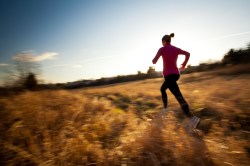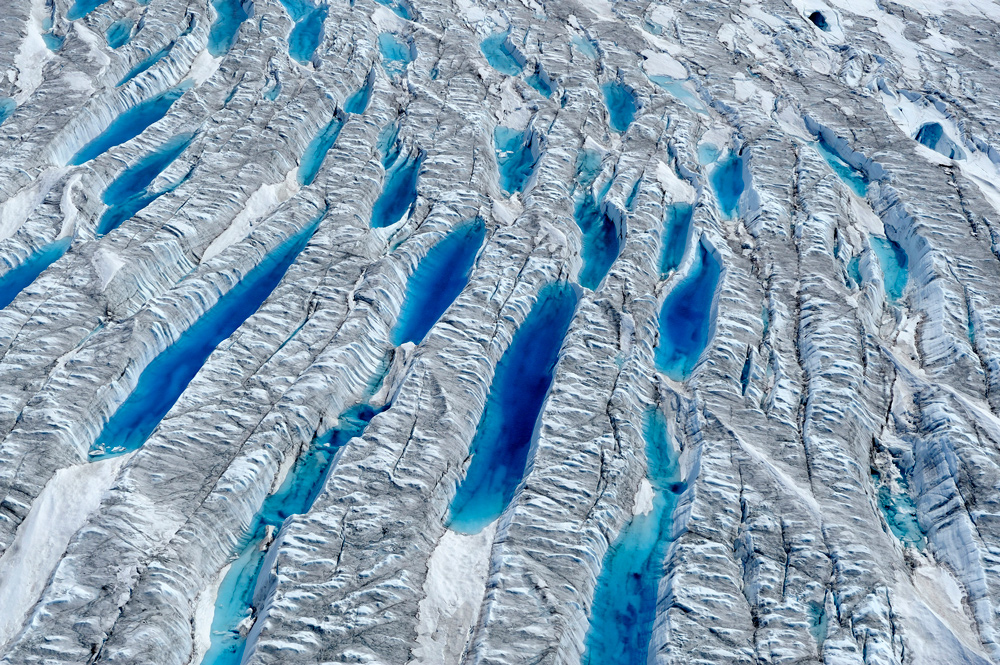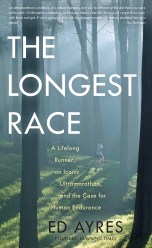
Photo by Shutterstock.
I learned about energy efficiency in a very painful and embarrassing way. Many years ago, I entered the famous Western States 100-Mile Endurance Run, which follows tortuous old gold-miners’ trails over the Sierra Nevada Mountains. I had calculated that I’d burn about 130 calories per mile, which meant I’d need about 13,000 calories to get through that run. So, I planned to consume about 80 PowerBars along the way. The first few hours went easily enough, but by the time I reached a major aid station at 54 miles, I was deathly sick and severely dehydrated — yet could no longer stand the sight of either food or water. How on earth were the other runners able to keep going? Only later did I learn that evolution has created a kind of bodily ecology that with training enables very small amounts of carbohydrate to interact with small amounts of fat to generate a far more efficient propulsion than I’d thought possible. Energy efficiency, it turned out, was a far bigger factor than energy supply in determining a man or woman’s ability to run over rough terrain all day and all night.
As I later discovered, in my work as an editor at the Worldwatch Institute, the mistake I’d made as an individual in my abortive 100-mile effort was almost identical to a mistake the United States had made as a nation. It began with a widespread misunderstanding of what energy efficiency really is. A salesman for gas-fired hot-water heaters, for example, might tell a customer his product has 85-percent efficiency because only 15 percent of the heat is lost “up the stack,” and therefore 85 percent is going into the water. But a physicist would point out that the gas flame is much, much hotter than the water coming out, so a lot of the work that could have been done by that flame has been wasted. In other words, it’s the work output or loss, not energy output or loss, that should be measured. According to the first law of thermodynamics, energy itself can’t be used up or lost.
In 1972, a government consultant, using the same unscientific logic as the water-heater salesman, presented a report to the U.S. Congress asserting that the country as a whole was using energy at a rate of 50-percent efficiency, which he assured the politicians was so high that no further gains from efficiency could be relied on and therefore the country would need to build hundreds of new nuclear power plants by the end of the 20th century. It was the same kind of thinking that had led me to think I’d need lots and lots of PowerBars.
But when my physicist brother Robert (at that time a professor of engineering and public policy at Carnegie Mellon University) did his own calculation of national energy efficiency, it came closer to 10 percent — which left opportunity for enormous efficiency gains. And as history now confirms, we did make enormous gains. A few years ago, the American Council for an Energy-Efficient Economy conducted a breakthrough study showing that three-fourths of America’s increase in energy demand over the previous 38 years — since the time of that misguided report to the Congress — had been met not by increased energy supply but by increased efficiency. All those new nuclear plants, like all those PowerBars, were never needed.
Long before my “aha” about efficiency, however, I had come to an even more far-reaching perspective on the links between individual endurance and societal sustainability — this one coming not in a flash, but over decades. It began in the very first of my 56 years (so far) of competitive running. When I was in 9th grade, my junior high school announced a tryout for an 880-yard relay team. The year before, Roger Bannister had electrified the sporting world by running the first four-minute mile, and my adolescent imagination had been sparked. I went to the tryout, lined up with about 20 other boys, and sprinted the 220 yards — and finished dead last, gasping for breath. Yet, two years later, I’d be the top runner on the high school cross-country team, running 2.5-mile races and breaking a school record that had been set by the school’s state champion 10 years earlier. But contrary to melodramatic stories like that of the Karate Kid, my transformation was not about heroically overcoming adversity; it was simply that I had discovered the momentous difference between a sprint and a long-distance run. I had no talent for sprinting, either in 9th grade or 11th. But what I did learn was that distance running uses a very different kind of energy metabolism, which any healthy person with two legs can develop. The sprint metabolism is anaerobic, the distance-running is aerobic, and the difference in range is almost astronomical.
A well-trained sprinter can run at full speed for no more than about two minutes, and most people can sprint for no more than about 30 seconds before coming to a gasping halt. Track athletes call that halt “the bear on your back.” At that point, you’re in severe oxygen debt. A well-trained endurance runner, in contrast, can run for 24 hours, typically making a few brief pit stops to refuel, etc., but otherwise nonstop. And with heroic training, the human body is capable of going considerably longer than that. Aerobic metabolism isn’t a secret of indefinite progress (the body eventually has to stop for repairs and regeneration), but it permits a range that is a thousand times that of anaerobic sprinting.
What I eventually grasped is that in industrial civilization, what we call “sustainability” has the same variability of range. And this isn’t an analogy, it’s a macrocosmic extension of the same ecological principles. The human tenure on Earth may not last forever (biologists say 99 percent of all the species that have ever lived on this planet are now extinct, suggesting that eventual extinction may be as normal for species as death is for individuals), but we have good reason to believe that our grandchildren and their progeny can enjoy life on Earth for millennia to come if we can learn to adopt civilization’s equivalent of the endurance athlete’s metabolism.
Alarmingly, however, what we now have, especially in the United States, is what I call a “sprint culture” — an addiction to speed and quick rewards that has radically contracted our likely future. Past generations of Americans believed life’s rewards came from a lifetime of hard work. But lately we’ve been conditioned to yearn for the reward to be right now: the lottery jackpot, the big night at the casino, the fat lawsuit settlement, the giant IPO, the insider trade, the flipped house, the multi-million-dollar contract for an 18-year-old basketball star, or that “You may already have won!” letter, with its breathless mention of $10 million. How appropriate is that word breathless?
The trouble is, if you unpack the economics, all this frantic rush for reward is driven by ever-rising consumption — ever-growing GDP — which is fueled by accelerating resource depletion, deforestation, and resulting carbon emissions and pollution of the only water and air we have. The most visible manifestation is in our major media’s almost never-questioned assumption that big Christmas sales are good — even essential — for the economy’s health. Yet, ecological economists like Herman Daly of the University of Maryland have made it clear that the doctrine of indefinite growth is a delusion. The term “unsustainable” isn’t just a gentle admonition; it’s a death knell. In short, the present economy is our civilization’s metabolic equivalent of the sprinter nearing the end of his anaerobic range, about the feel the bear on his back.
Biologists like Dennis Bramble and David Carrier at the University of Utah and Daniel Lieberman at Harvard have established that early humans evolved as long-distance-running “persistence hunters” able to run down faster animals by outlasting them. And momentously, their research suggests that it was in the transition from biped walkers like our famous ancestor Lucy to long-distance-running pursuers of game that we developed the extraordinary physical endurance, patience, and ability to see ahead — to envision a quarry that had temporarily disappeared from sight — such that our brains grew to what they are now. Today’s distance runners have rediscovered and confirmed that humans can actually outrun horses, wolves, or any other terrestrial animal over a period of days. And only humans can plan where they are running.
We are by nature the most enduring, patient, and envisioning of all species. But our culture has seduced us away from that nature. There are communities that have instinctively resisted that seduction — “slow food,” hiking, trout fishing, meditation, violin-playing, gardening, reading, bird-watching, trail running. But to have hope of a truly enduring future, our whole global enterprise will need to slow down — in its addictive consumption and grasping for quick rewards — and begin to find a rhythm for the long run.




